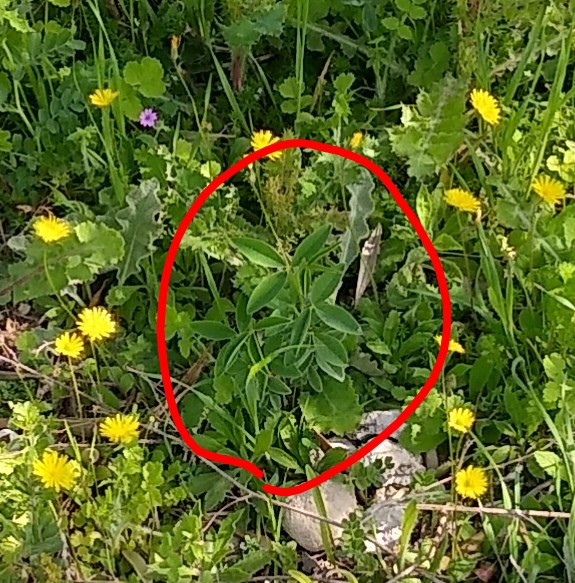
 2
2




 2
2




Earthworks are the skeleton; the plants and animals flesh out the design.
 1
1




 3
3




Konstantinos Karoubas wrote:Apple seeds
The apple seeds were kept in the refrigerator since December 24 in wet/moist sand. They were beginning to form mold.... today they were cleaned/rinsed and will be placed in the fridge until they are planted... hopefully in the next week.
Some of the seeds are from the apples we ate from our farm...but 2/3 were bought from a seed company in Italy.
This is the 1st year I am trying to scarify the apple seeds this way...will see how it goes.
I plan on planting 5 seeds or more per hole. Hopefully the weather will be cold enough to complete the scarification process and the conditions will be favorable/not very adverse.
We also collected seeds from store bought apples. It seems store bought apples have seeds that were cold scarified, just to the right degree. They do very well here...40 to 50% survival rate. Two or three of these seeds will be placed in each hole.
Again to summarize what we do: seeds are placed in the ground and are left to fend for themselves... totally; no intervention.
Thus keeps the cost of time and money to a bare minimum, and allows a single individual to have a significant positive impact on his/her surroundings.
As always we are at the mercy of mother nature and I have gone to the same piece of land 3 and 4 or 5 times before it's completely covered with trees.
Kostas
 1
1




 5
5




 3
3




 4
4




 2
2




 2
2




 2
2




 2
2




 2
2




 3
3




 2
2




 2
2




Konstantinos Karoubas wrote:Hola Antonio,
Felicitaciones for your success !!!
I will definitely try chestnuts at all locations next fall.
Send us a small video and/or photos.
Thanks
Kostas




 3
3




 3
3




 5
5




 2
2




 1
1








 1
1













 2
2












Konstantinos Karoubas wrote:Something eat/destroyed a perfectly good young oak tree...
Not heat or drought...must have been a pest/creature of some kind.
All part of the process.
Kostas




 1
1




 2
2




 1
1




Konstantinos Karoubas wrote:I have been wondering-is there a tree or a shrub, that can be planted next to an olive tree, that can provide some or all of the following benefits.
* Fix nitrogen-eliminate need for some of the fertilizers
* Have deep strong roots to help penetrate/open up the subsoil and bring up moisture and nutrients-eliminate need for watering
* Act as a pest repellant
I have planted Laburnum anagyroides next to a few olive trees and in the next few years I will monitor their growth and production. See photos 1 and 1a above. Laburnum fixes nitrogen and its leaves have a bad smell-their beans are poisonous and not edible.
By accident, a Koerleuteria paniculata (golden rain tree) has been growing near a mulberry tree-see photo 2. This tree is almost twice as big as the other mulberry trees on our farm. The golden rain tree loves it here -it grows every where. Its seeds need to scarification or help-they sprout all over the place. i transplanted some of them under the other mulberry trees-see photo 2a. We will monitor and report on the results.
There could be others factors that contributed to the fast growth of that mulberry tree.
I wish the fine research centers/universities around the world would pay some attention to this.
For every fruit or nut tree the maybe a companion tree that will help in many ways- this will ve different from region to region.
Kostas
 1
1




Rebecca Blake wrote:
This is very interesting about the companion trees. I just bought land in Central Texas and have learned a thing or two about our Madrone trees here (they have edible berries). They’re super hard to grow and keep alive because they seem to need to grow in the shadow of the Ashe Juniper tree. Unfortunately, these junipers are not favorable in our region as they have taken over, so many times the junipers will be thinned. This causes the Madrone tree to get weak and die.
I’m hoping to find a way to thin the cedar and yet maintain the good health of these endangered madrone trees, but I am also nervous of harming them as I turn our land into food forest... we’ll see.
Thank you for your information on olives. We wanted to get olives out on our land but were not sure if they could survive without us being there to water. Now I know I should get some seed and go that route. My husband was wanting to try buying a few trees but I didn’t want to spend the money and have them die from lack of attention!











 1
1




Earthworks are the skeleton; the plants and animals flesh out the design.











 1
1




Earthworks are the skeleton; the plants and animals flesh out the design.
 1
1




* Fix nitrogen-eliminate need for some of the fertilizers
* Have deep strong roots to help penetrate/open up the subsoil and bring up moisture and nutrients-eliminate need for watering
* Act as a pest repellant
 1
1




S Ydok wrote: I don't know about trees much, but we have a madrone tree growing in the shadows of a giant oak. It's also on/by a runoff pond that isn't wet year round.
 1
1




 1
1




Abraham Palma wrote:
What about retama sphaerocarpa? I don't know if it is pest repellant, but it is medicinal.

|
Happily living in the valley of the dried frogs with a few tiny ads.
Rocket Mass Heater Resources Wiki
https://permies.com/w/rmh-resources
|








